Wristshots And Online Watch Photography: The Saga Continues, And, Yes, There’s Instagram Too – Reprise
by GaryG
How time flies! It seems like only yesterday that I penned an article here about “the story so far” on the practice of wristshots. In reality, that was in March of 2015. And it was in 2017 that I posted thoughts and images on how to – and how not to – take watch photographs for sharing.
Seems about time for an update on both – as while some things remain the same, much has changed.
Wristshots: the current state and a quick note on origins
In my original wristshot article, I confessed my ignorance as to the very earliest emergence of the practice. When we reprised the article here recently, contributor Colin Alexander Smith commented that to his knowledge the first such wristwatch image of note was taken by famed photographer Josef Koudelka during the 1968 Soviet invasion of Prague, showing the armored vehicles rumbling into the city with his watch pictured in the foreground.
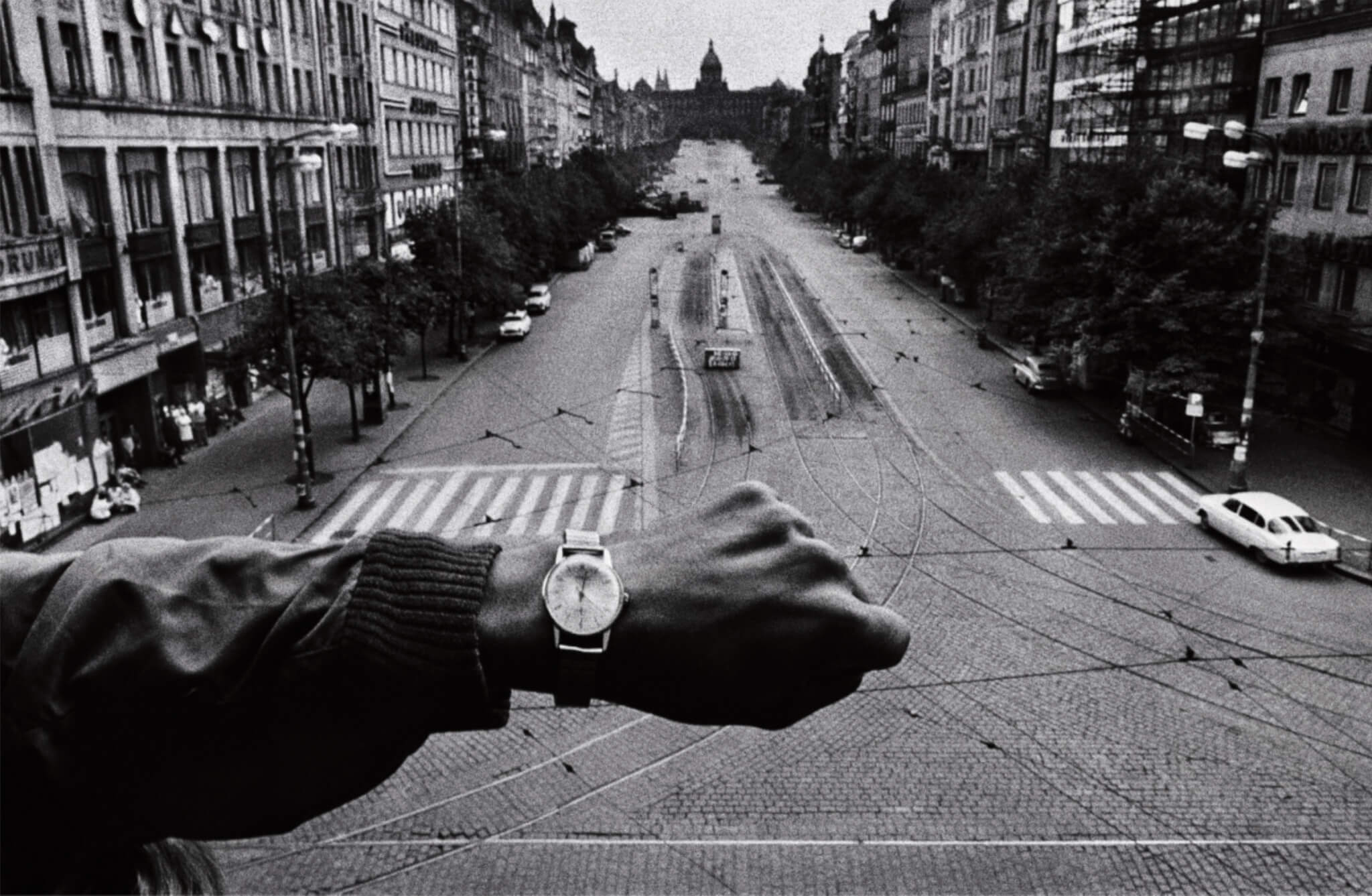
Warsaw Pact troops invasion, Prague, August 1968 (image Josef Koudelka/Magnum Photos)
Suffice it to say that pretty much every wristshot since pales compared to the historical importance of this one. And while I did not see this image in person during my visit to the Magnum archives in Paris, you may be assured that it will be at the very top of my list if I am fortunate to arrange a return engagement there.
Just to show how rapidly things change, in my 2015 article I felt compelled to define what a wristshot was and compare it to another recently unknown form of expression, the selfie. Do we even call them selfies anymore or are they just photos?
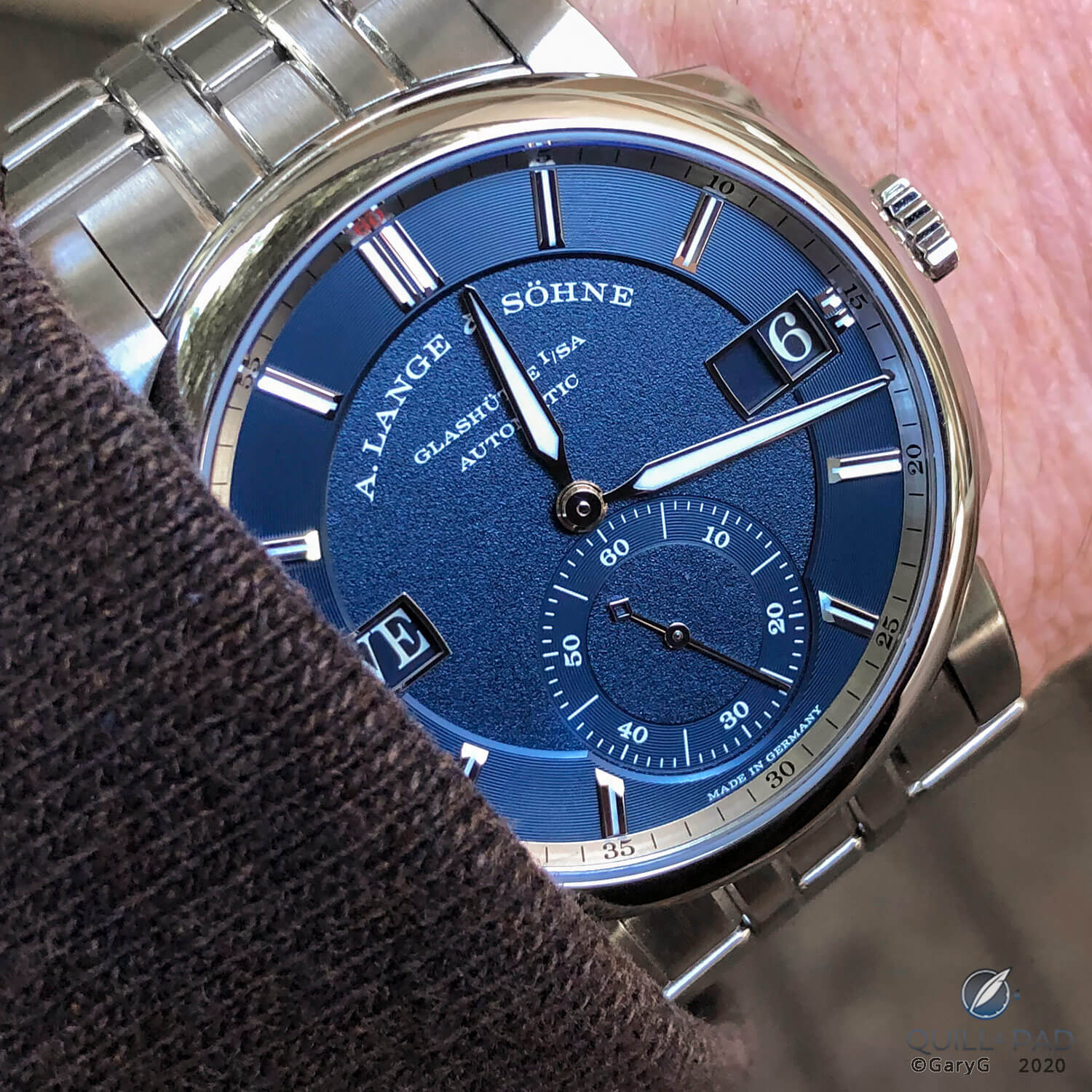
Just like the good old days: typical old-style wristshot of the author’s A. Lange & Söhne Odysseus
I also shared some observations on the “whys” behind photos of wrists bearing watches. Many of those still seem prominent today, including “friendship” shots of several pals’ wrists together (although, as with many things, the pandemic has dampened that practice a bit), shots that register astonishment at being able to handle an ultra-rare limited edition or auction piece, and visual love notes to a specific watch in one’s collection.
Compared to 2015, I’d say that the “reporting” aspect of amateur wristshot posting has both decreased and increased. With new watch launches now spread across the year and each seemingly trumpeted immediately in a zillion online publications, the idea of an enthusiast posting “what I just saw at the show” seems almost quaint.
That said, as many new watches are being shared openly with enthusiasts even before launch and delivered to eager owners as soon as they are introduced, we have the benefit of a resulting flood of unfiltered, real-life images of these pieces in the wild as seen by non-professionals.
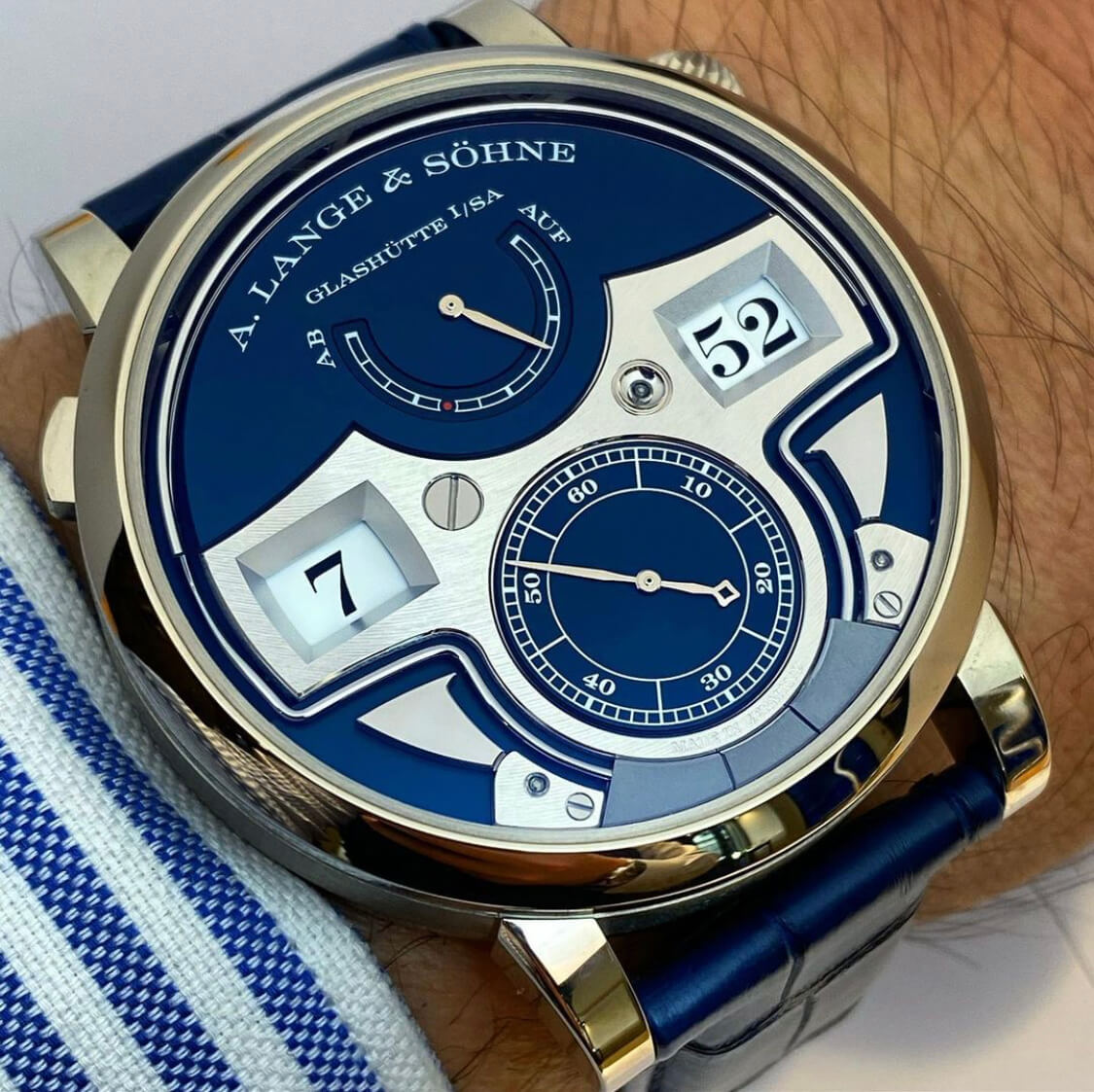
Shooting and sharing: A. Lange & Söhne Zeitwerk Decimal Repeater as captured by FX Overstake (@equationdutemps)
Happily, some wristshot practices seem to have diminished over the past five years. For instance, while the “watch in car” shot is still a staple of online fare (and in addition to letting the shooter show off the fancy logo on the steering wheel, also fills a bit of traffic light time) it seems to me that the “watch with food” photo mania has substantially tapered, praise be.
One exception that I’ll allow is the page of wife-and-husband team @aytystyle, who, in addition to displaying a startling set of watches, handbags, and couture, transport us vicariously to three-star restaurants in Japan on a regular basis. If it weren’t all so darned tasteful and I didn’t envy it so much, I’d hate it!
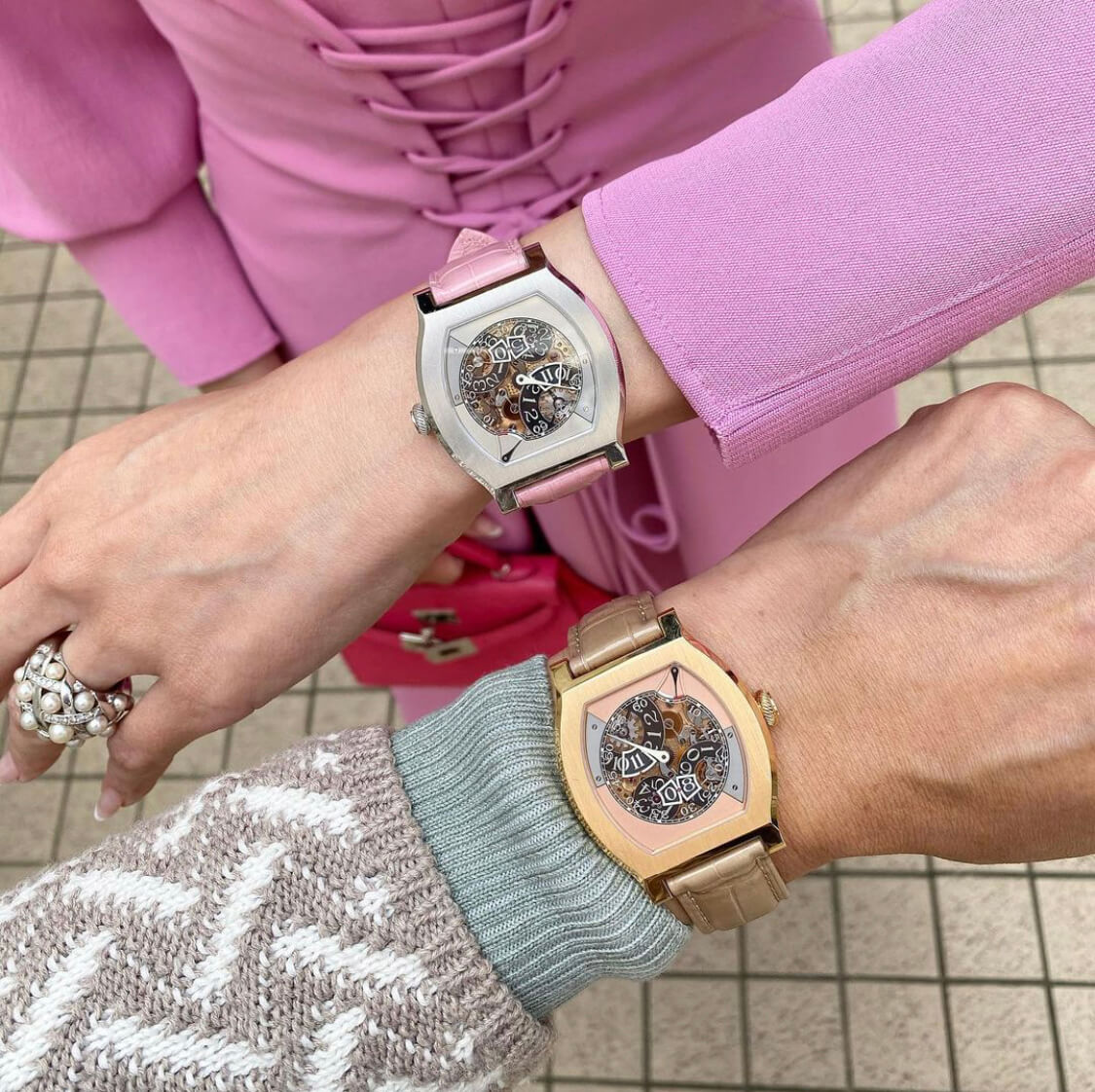
Living the luxe life: a typical shot from @aytystyle
Enter Instagram
Perhaps some of the greatest changes in content, though, are consistent with a change of the dominant medium for sharing: just as Facebook supplanted the forums, so has Instagram become the universal platform for wristshots – at least for now.
The term “Instagram” didn’t even appear in my 2015 article, but I’d argue that Instagram’s emphasis on visuals over narrative, its more public orientation vs. the friend-based model of Facebook, and the constant emphasis on accruing more and more followers for one’s account in the face of algorithms that make achieving that increasingly difficult all have a direct effect on the watch images we see today.
- Beyond wristshots: the traditional wristshot, with the watch filling the great majority of the frame, with its slightly odd complement, the “pocket shot” with hand inserted in trousers, still constitutes a substantial percentage of current online posts – a quick scan of the first 25 amateur watch shots in my Instagram feed turns up 15 of those. But that leaves another 10 in my completely unscientific sample for what used to be called “static” shots: watches off the wrist in a variety of settings, including isolated light tent images, outdoor shots, and photos with a variety of props and backgrounds.
- Better quality: Sure, there are still lots of uninspiring watch images out there, but I’ve been really impressed with the sheer quality of much of what’s being posted these days. Certain watches will always get their share of clicks and follows regardless of image quality, but to gain and retain faithful fans in what is very much a visual medium there is no substitute for striking visuals.

Quality shooting: detail shot of a Ming watch by @waitlisted
- Specialization and visual branding: Just as I’ve been working on broadening my variety of visual styles and subject matter, it seems that narrow specialization in both topics and optics is becoming more common to stand out in a crowded field. Examples here are @toiche with his single-minded focus on Breguet Type 20 and related chronographs and both @waitlisted (aka James) and @_mrdata_ (aka Dirk), who, like me, favor the moody visual style pioneered by @MingThein.
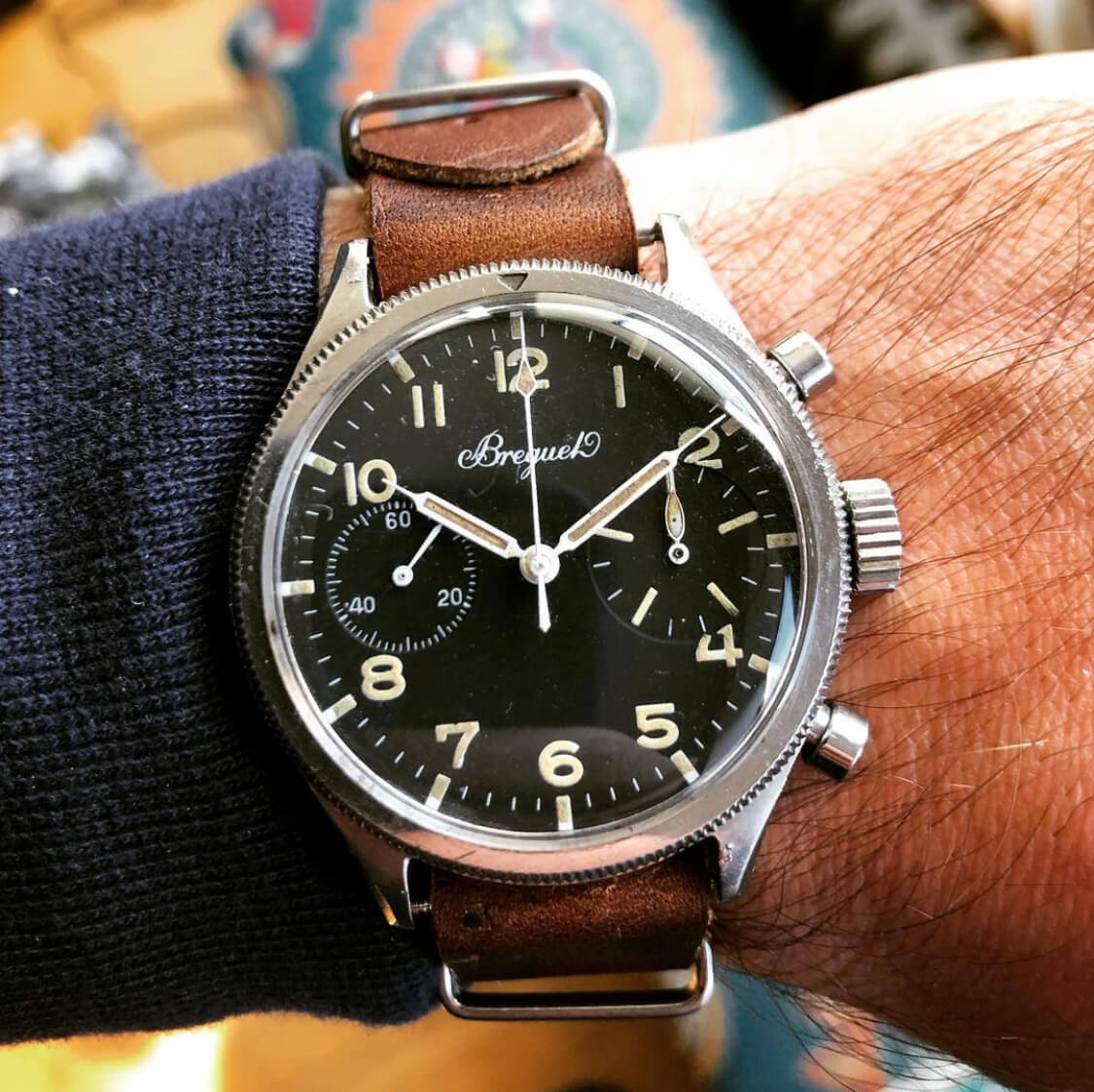
Personal brand franchise: a typical vintage Breguet image posted by @toiche
- She can shoot: One development supported by the all-comers nature of the Instagram medium is the emergence of a significant number of women among popular enthusiast photographers. These include Hong Kong-based collector Lung Lung Thun (@lunglungthun), who treats us to a combination of lifestyle and watch content; Déby Maldonado (@iwcgirl), a longtime poster and Brazil-based IWC fanatic; vintage watch fancier @oldwatchlady; and @deletrium (aka Wanyu) from Singapore, whose close-in macro work is beautifully framed and dramatically lit.
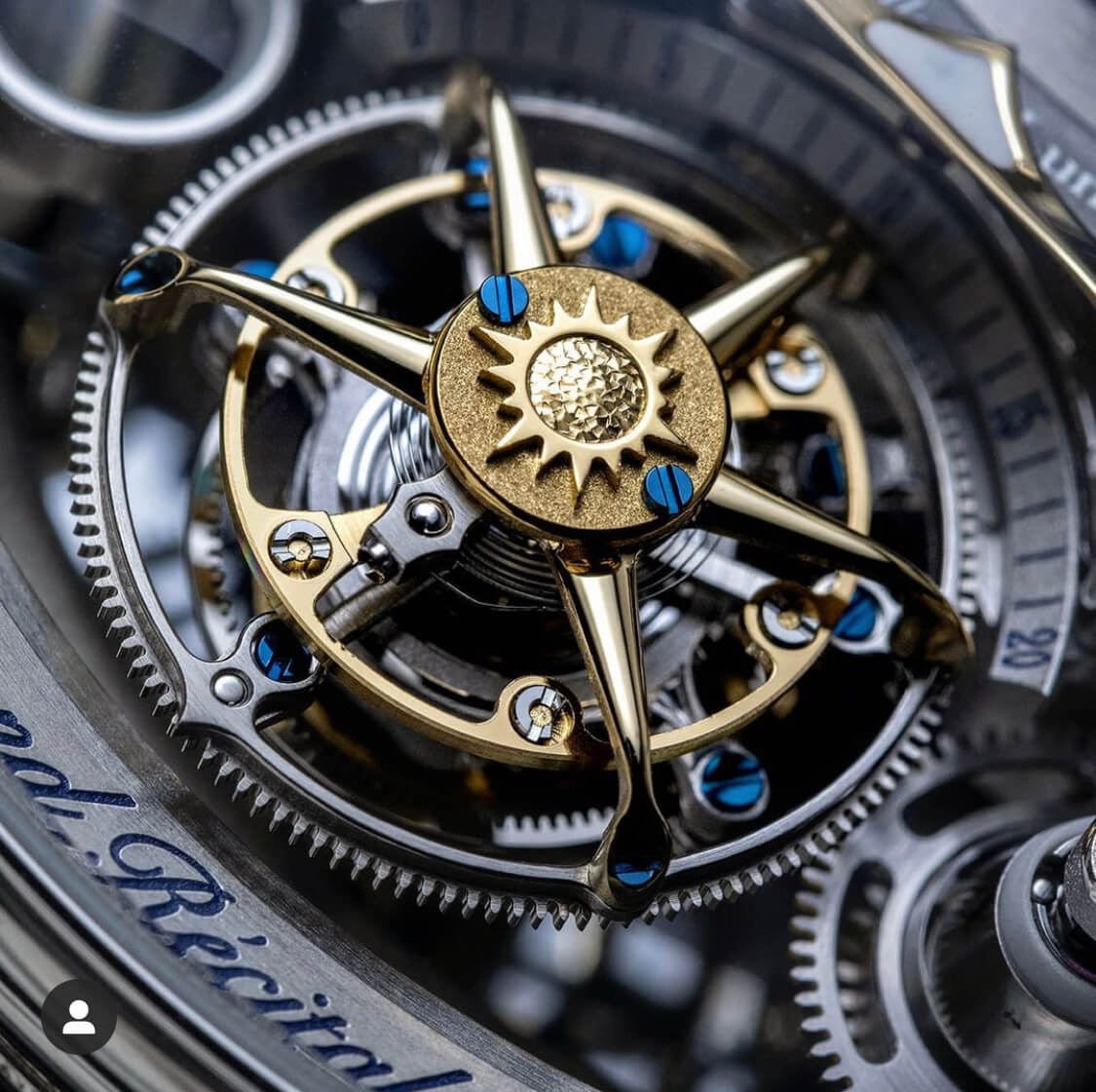
Macro madness: beautifully lit Bovet close-up from @deletrium
- Collectors emerging from the shadows: Some collectors like John Goldberger (@goldberger) have been quite generous about showing their watches for a while, but in recent times the set of top collectors who are becoming more public seems to be trending upwards. A favorite of mine is Uganda-based Roni Madhvani (@roni_m_29), who on a daily basis shows us subsets of his mind-blowing and eclectic selection.
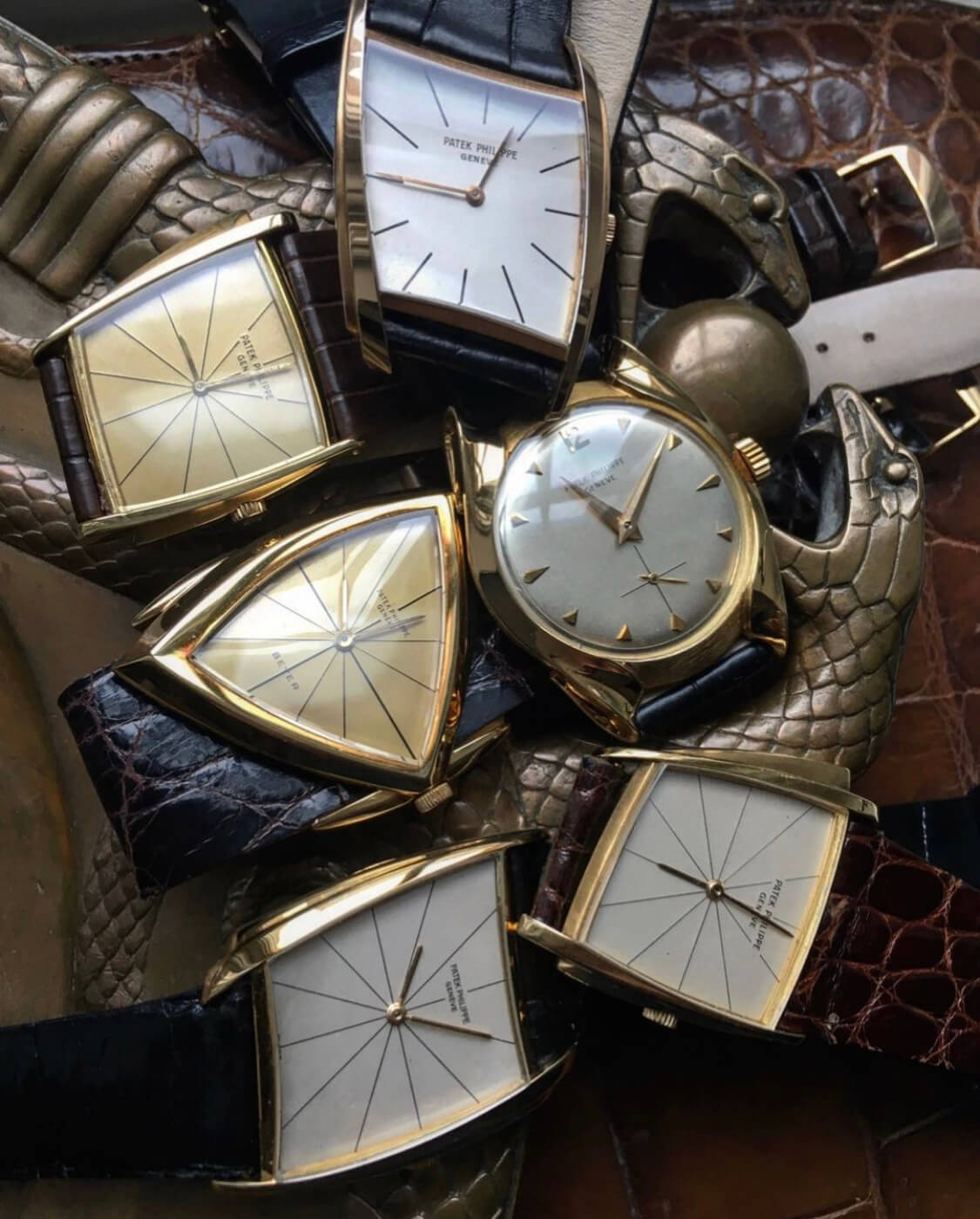
Ho hum, nothing to see here: astonishing set of Gilbert Albert Patek Philippe models from @roni_m_29
- Humor, redefined: In my 2015 article I used an “ankle shot” as an example of humor in wristshots. In 2020, the visual nature of Instagram and rapid-fire format of Stories has provided a forum for any number of satirical watch humor pages. The boom of this phenomenon deserves its own deeper investigation, I think, so I’ll come back to it soon in another article.
- More sex: Yes, sex still sells. And now that the big brands seem to have eased away somewhat from the overt use of sex in advertising, that leaves plenty of space for others to fill the void. In the wristshot and watch shot world, this translates into pages from both women and men in which the bodies on display take precedence over the watches that make largely incidental appearances. In this genre, I’ll briefly call your attention to Instagram page @lugsandjugs (no, I’m not making this up): tagline in bio “Watches aren’t mine, but the jugs are!” One difference from prior practice: the sexualization is driven by the account owners themselves rather than by brands or media outlets.

Find the watch: a recent post from @lugsandjugs
- More flex: Yes, I’ve committed the sin of posting combo wristshots such as the Romain Gauthier Logical One together with the Greubel Forsey Invention Piece 1 on the same arm, but each time I see yet another shot of five Richard Mille pieces strapped from elbow to wrist on someone I firmly resolve to abandon anything resembling that tactic going forward. That said, it must draw viewers or people wouldn’t do it.
- More themes than days: What once was only #SpeedyTuesday is now #MingMonday, #MacroMonday, #TourbillonTuesday, #WetWatchWednesday, #FliegerFriday, and on and on – I’ve now taken to making “days” up just for grins on some of my posts.
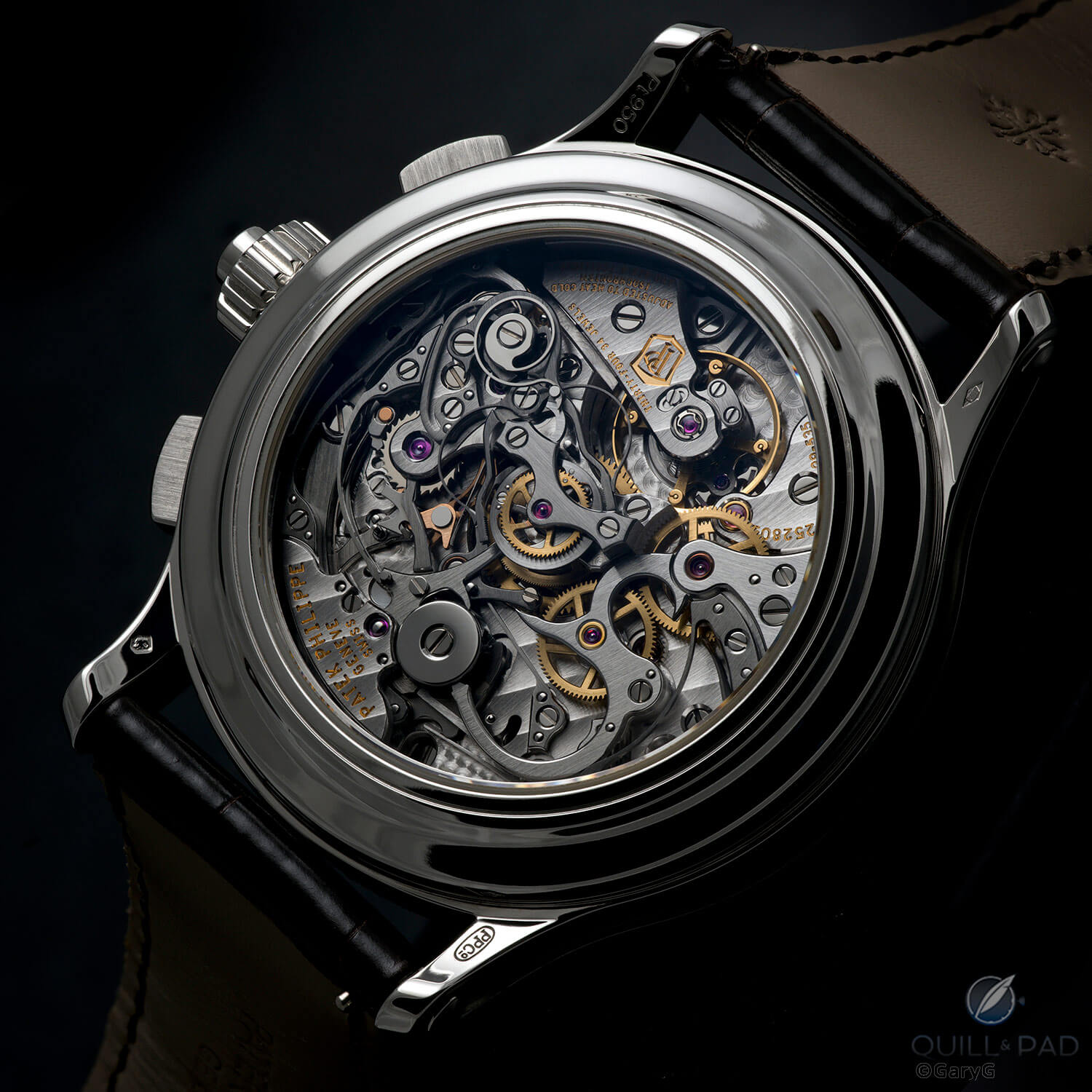
What day is it? A recent Instagram posting by the author for “#CasebackFriday”
- Brands thanking – and leveraging – amateur shooters: One recent example here is from Kurono Tokyo, who not only actively thanked enthusiast shooters who featured their watches online, but went further and compiled a collection of those images and printed them in a coffee table book sent to the photographers in question.
- Aggregation and curation: Is it entirely fair that I can labor for hours over a photo and accounts like @haulogerie can then re-post it (with appropriate credit) to an audience nine times the size of mine and garner a much larger response? Maybe so, maybe no – but in an exposure-driven medium, having your photo chosen for one of these pages vs. toiling in obscurity is a net positive.
And before I finish . . .
Wristrolls. Had they been prevalent in 2015, I’m sure I would have mentioned them – unfavorably. So I’m guessing it was probably around that time that I saw my first wristroll video online. Watch buddy Andy Green was the perpetrator and he continues the practice to the current day (his most recent victim as of the moment I’m writing this is a pavé-dial gold Rolex).
There’s just something about scrolling down to what you hope will be the next watch photo and instead being greeted with an image of the underside of someone’s wrist and a watch clasp; if you have the patience (and I don’t), eventually the wearer slowwwwwwly turns his or her wrist over (perhaps with a teasing reversal or two of the rotation along the way) until we see what we first came for, the watch itself.
If my cursory research on the Instagram algorithm is correct, one metric that it uses (or at least used circa 2017) to decide whether to promote your post to others is the length of time that viewers linger. This in turn suggests that engaging captions, multi-image posts that require swiping left and right, and, yes, wristrolls and similar videos that force you to twiddle your thumbs as you await the payoff are all beneficial when it comes to building your page’s impact.
I get it, and I will still continue to zip past wristrolls as rapidly as I can (unless I’m responding with my trademark #friendsdontletfriendswristroll hashtag, in which case I’ll stay just long enough to type that in).
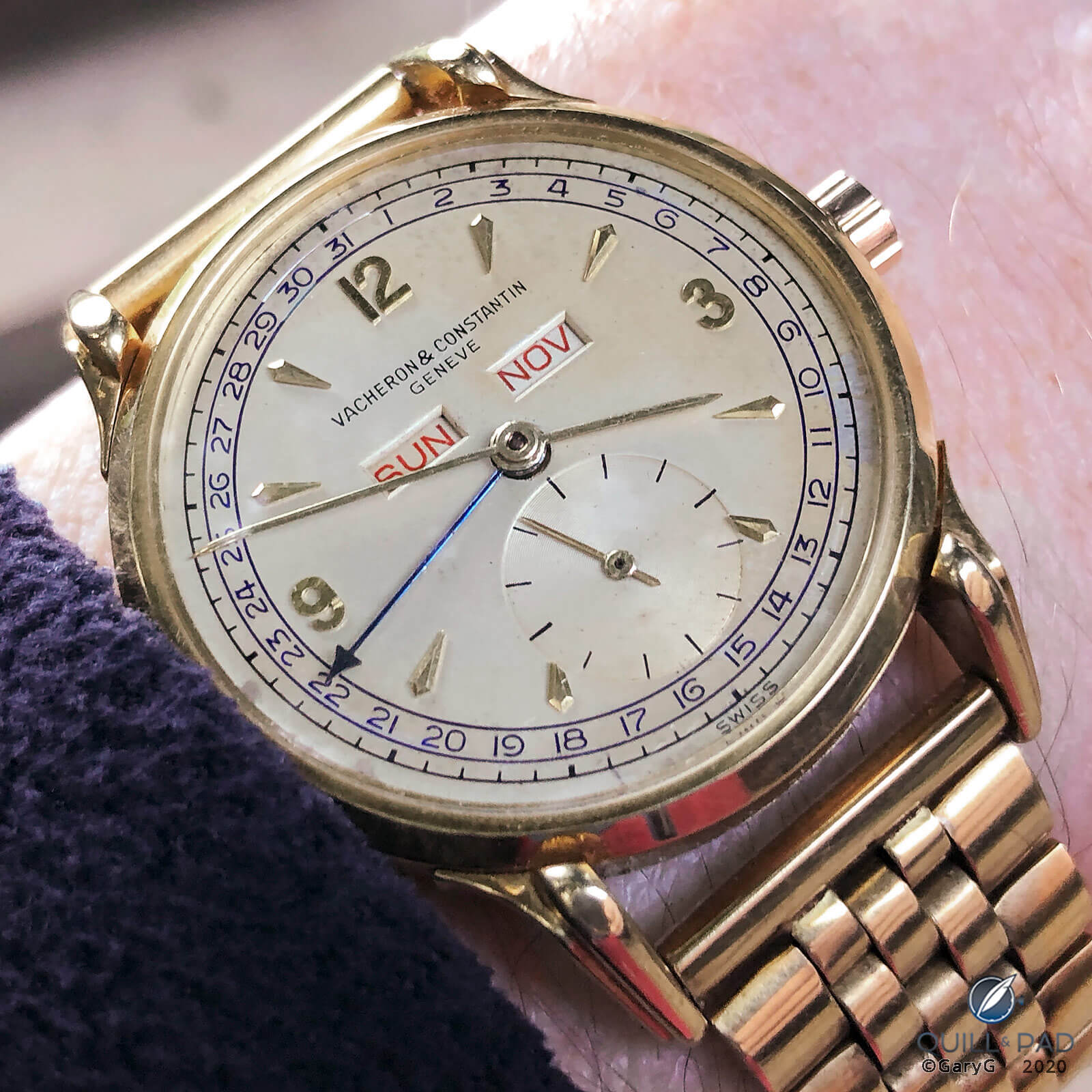
Not a wristroll: a traditional wristshot of the author’s vintage Vacheron Constantin Reference 4560
That’s the story so far! If seeing how archaic my commentary from five years ago seems today is any indication, the next installment in this series in a year or two should be a doozy – I can already see the TikTokization of wristshots beginning, and I’m sure there will be more developments.
Until then, happy wearing and happy shooting!
By the way, you can see more of my photos on Instagram at @GaryG_1.
*This article was first published on December 19, 2020 at Wristshots And Online Watch Photography: The Saga Continues, And, Yes, There’s Instagram Too.
You may also enjoy:
How To (And Not To) Photograph A Watch
11 Brilliant Wristshots From Sunny Geneva Watch Days 2020
Top 5 Wristshots From 2019 SIHH, Plus 5 More (Just Because), And Then . . .
Leave a Reply
Want to join the discussion?Feel free to contribute!



Hi
Great article.
The famous shot by Joseph Koudelka was out of context though as it was purely for context predigital cameras not having time stamps.
I’m not sure what the real purpose of the “flex” shots on internet platforms is really. They are certainly cringe-worthy and the more opulent the scene the more fake they seem. A lot of so called “influencers” have now been exposed hiring exotic cars, expensive houses, etc to create a persona. Who knows how many of the watch flex opportunities operate in a similar vein? What is sad though is the thought that there are people out there who are actually purchasing the most regurgitated watches from “flex” pix in the hope of achieving some form of recognition on said internet communities. It’s hard to imagine any desire more shallow really.
Thanks for your comments and I’m glad you enjoyed the article. You note appropriately that Koudelka’s image was definitely not about the watch!
Even among “real” collectors who post watch photos online there’s a clear tendency to avoid saying whether a particular watch is owned by the shooter, property of a friend, or just on the wrist at a boutique. I do my best to be clear about these distinctions — I’ve likely let one or two slip by, but for me transparency is pretty important.
Best,
Gary